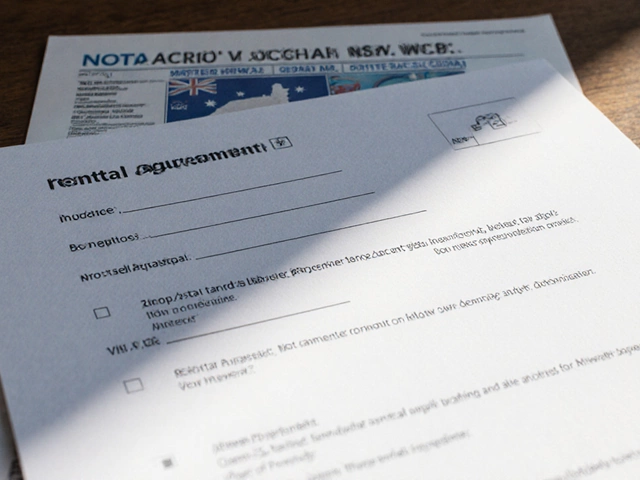Alright, let's talk about cap rates, shall we? If you're even remotely involved in commercial properties, you'll hear this term thrown around a lot. It's short for capitalization rate and is basically a way to gauge the potential return on a property. Imagine it as a ruler to measure the deal before you dive in.
Now, is 7.5% a good cap rate? Well, there's no one-size-fits-all answer, but in many situations, it could be pretty solid. This percentage is kind of the middle ground for real estate investors. It's like finding that comfortable spot between risk and reward.
- Understanding Cap Rates
- The Sweet Spot: Is 7.5% Good?
- Factors Affecting Cap Rates
- Tips for Evaluating Cap Rates
Understanding Cap Rates
So, what exactly is a cap rate? It's a term that pops up a lot in the world of commercial property. In simple terms, it's a formula used to estimate a property’s potential return or profitability. You take the net operating income (NOI) — basically the revenue minus operating expenses — and divide it by the property value. Boom! You've got your cap rate.
This formula gives investors a quick snapshot of what they're getting into. Higher cap rates often mean greater potential returns but might carry more risk, while lower rates suggest steadier, less risky investments. It’s like sliding on a seesaw between high risk/high reward and low risk/steady growth.
Now, different property types tend to have different average cap rates. For example, multifamily properties typically have lower cap rates compared to office buildings or retail spaces. This is because residential rentals are usually seen as less risky, meaning investors are often happy with a lower return in exchange for that stability.
Here's an interesting fact: While cap rates can vary by location and market conditions, in Australia, around the past decade, we've seen average cap rates for commercial real estate ranging between 5% to 10%. Of course, the specifics might fluctuate, but this range gives you an idea.
But cap rates aren’t just about the numbers. They’re like a weather forecast — they're helpful in predicting what might happen, but they don’t cover everything. Cap rates don't take into account future growth prospects, the potential for property appreciation, or changes in the local economy. So, it’s important to see them as part of your overall investment puzzle rather than the whole picture.
The Sweet Spot: Is 7.5% Good?
Let's dig deeper into this 7.5% cap rate business. In the world of commercial real estate, the cap rate helps investors decide if a property is worth their cash and attention. It reflects the expected return, based on the net income a property generates and its purchase price.
So, is 7.5% the magic number? Well, it really depends on a few things. First, location is a massive factor. For example, in bustling cities with high demand, like Sydney or Melbourne, cap rates tend to hover lower. These areas often see more like 4-6%, so if you're eyeing something there with a 7.5% rate, it might mean the property comes with potential risks or requires upgrades.
On the flip side, in less saturated markets or smaller cities, 7.5% could be an ideal number, showing balance between revenue and risk. Many investors consider 7-8% a kind of 'sweet spot' for secondary markets, as they offer better returns without venturing into high-risk territory.
Another thing to keep in mind is the broader economy. In booming times with low inflation, properties may present lower cap rates because everyone and their dog is investing. But when things slow down, like during a recession, cap rates might edge up as investors demand higher returns to account for increased risks.
Here's a quick consideration list when deciding if 7.5% is a go:
- Check the local real estate market trends.
- Evaluate the property's condition and potential for appreciation.
- Consider financing options and interest rates.
- Compare similar properties' cap rates in that area.
Basically, 7.5% can be a solid target if it aligns with your investment strategy and risk tolerance. Always balance the potential income with what you're willing to gamble.

Factors Affecting Cap Rates
Let's get into what really stirs the pot when it comes to cap rates. It's not just about slapping a number like 7.5% on a property and calling it a day. Various factors come into play, each twisting and turning those rates. Understanding these can give you a leg-up in the commercial property game.
First up, location is a massive player. Properties in prime spots often have lower cap rates because everyone wants a piece of the pie. A fancy shopping district? Probably lower rates. An industrial region? You might see higher numbers. It's all about demand. High demand areas usually mean lower returns and vice versa.
The property type also makes a big difference. For example, office buildings might have different dynamics compared to a shopping center or a warehouse. Each type holds its own set of risks and potential returns. Investors often balance the real estate investment to match their risk comfort zones.
Let's not forget the current economy. Interest rates, occupancy rates, and economic growth all tip the scales. High interest rates? Property deals might look less attractive, squeezing cap rates higher. It’s like a property seesaw, riding up and down with the economy.
Tenant quality is another one. Properties with long-term leases to solid businesses tend to offer stability and lower cap rates. High turnover or risky tenants can mean higher rates as those properties are considered riskier.
| Factor | Influence on Cap Rate |
|---|---|
| Location | Prime = Lower, Less Desirable = Higher |
| Property Type | Office, Retail, Industrial - Varies by Demand |
| Economic Conditions | Interest Rates, Growth - Dynamic Effects |
| Tenant Quality | Stable & Long-term = Lower, Risky = Higher |
Lastly, don’t overlook local market trends. Keep an eye on any development projects or changes in regional regulations. These can tilt the balance significantly. Knowing all these elements lets you better assess if a property sale at 7.5% actually lines up with your investment goals.
Tips for Evaluating Cap Rates
Diving into the world of cap rates can feel a bit like trying to navigate a maze, but don't worry—you don't need a degree in rocket science for this. Here are some easy tips to help you out.
First up, always do your homework on the local commercial property market. Each location can tell a different story. A 7.5% cap rate might look appetizing in some areas while being a red flag in others. Check out local economic trends, demand, and the types of businesses thriving there. This'll give you a clearer picture of what's realistic and what isn't.
Next, compare with similar properties. It's like when you're grocery shopping—whether you’re picking apples or hunting for deals, having something to compare against is always handy. Look at cap rates of properties with similar sizes, locations, and tenant types. This gives you a nice baseline to see if that 7.5% is a good catch or just average.
Real estate investment comes with risks, so consider your risk tolerance. A higher cap rate, like 9%, usually means more risk, while a lower cap rate might suggest more stability but less return. A 7.5% cap rate often symbolizes a balance some investors find appealing.
- Get friendly with local agents. They're a good scoop of insight on the neighborhood and can help you understand unexplored factors that might impact the cap rate.
- Don't skip analyzing the net operating income (NOI). The cap rate relies on this crucial figure. Ensure you’ve got solid, projected income and expense numbers for accuracy.
- Diversify by looking at different property types. Sometimes, shopping centers and office spaces might yield different results than a stand-alone commercial building.
Finally, keep an eye on the bigger economic picture. Economic shifts can tilt the balance of power between a 'good' and 'bad' cap rate. It could affect everything from tenant stability to market demand. Staying informed can be the difference between a good investment and a great one.





